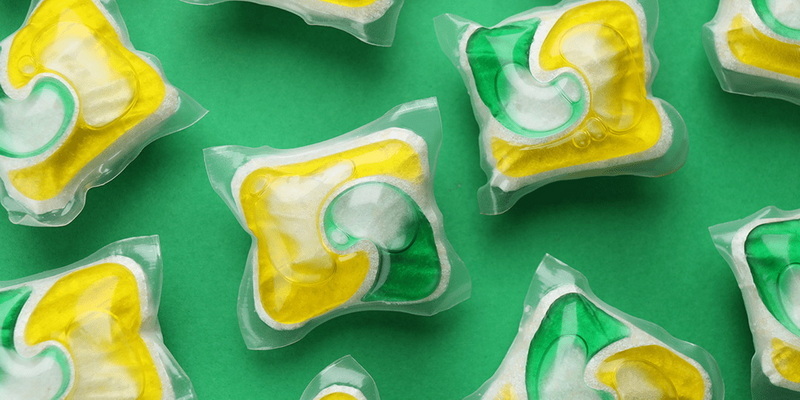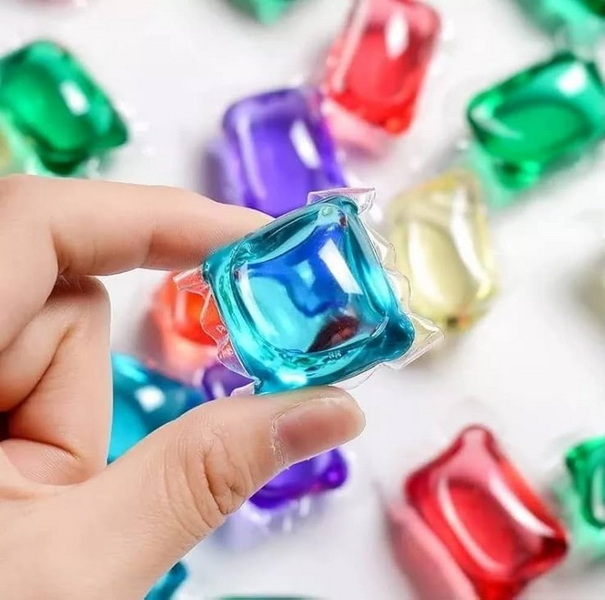Dongguan UFine Daily Chemical Co.,Ltd.
- All
- Product Name
- Product Keyword
- Product Model
- Product Summary
- Product Description
- Multi Field Search
Views: 222 Author: Tomorrow Publish Time: 10-28-2025 Origin: Site











Content Menu
● Cruelty-Free Standards and Definitions
● Brand Policy and Public Statements
● Ingredient Sourcing and Animal Testing
● Industry Practices and Advocacy
● Case-by-Case Assessment for Cascade Dishwasher Pods
● Rationale Behind Cruelty-Free Labels in Household Cleaning
● Regulatory Context and Regional Nuances
● Environmental and Ethical Considerations Beyond Cruelty-Free
● Consumer Guidance for Cascade Based on Cruelty-Free Concerns
● Alternative Cruelty-Free Options in the Market
● Common Misconceptions and Clarifications
● FAQ
>> Q1: Do Cascade Dishwasher Pods have any cruelty-free certification?
>> Q2: Does Cascade claim to avoid animal testing in all markets?
>> Q3: Are all ingredients in Cascade Dishwasher Pods cruelty-free?
>> Q4: Can I trust retailer listings for cruelty-free status of Cascade products?
>> Q5: What alternatives exist if I need a cruelty-free dishwasher pod?
Cascade Dishwasher Pods have become a common choice for households seeking convenience and effective cleaning. This article examines whether Cascade Dishwasher Pods can be considered cruelty free, exploring brand policies, third-party certifications, ingredient sourcing, and the broader context of cruelty-free standards in the cleaning products sector. The goal is to present a balanced view based on publicly available information and industry practices.

Cascade Dishwasher Pods are formulated to dissolve in dishwashers and release a combination of enzymes, surfactants, chelating agents, and fragrance. The pods are marketed for their ability to deliver concentrated cleaning power with minimal effort. Consumers often prioritize performance, convenience, and safety when selecting a dishwasher pod, and cruelty-free status can be an important factor for many buyers.
Cruelty-free generally refers to products that have not been tested on animals at any stage of development or production. Definitions and certifications vary by region and certifying body. Common standards include:
- No animal testing by the brand or its suppliers.
- No animal testing for the finished product.
- Third-party verification from recognized organizations.
- Clear labeling indicating cruelty-free status.
A brand's stated policy on animal testing provides initial indicators of cruelty-free commitment. Some manufacturers claim to avoid animal testing entirely, while others may rely on third-party suppliers that conduct their own testing. It is important to review official statements, annual reports, and third-party audits for accuracy. Consumers should consider whether the policy extends to all markets where the product is sold, as regulations and enforcement differ by country.
Third-party certifications can offer greater assurance to consumers. Notable cruelty-free certifiers include:
- Leaping Bunny
- PETA Approved Vegan
- Choose Cruelty Free (CCF)
- Cruelty Free International
Aligning with one or more of these certifications typically requires rigorous audit trails, supplier verification, and annual renewals. Some certifiers have regional variations or can allow certain exemptions (for example, in countries where local regulations permit animal testing for specific purposes). It is essential to verify current certification status on the certifier's official website.
The cruelty-free status of a product can be affected by:
- Whether any ingredients (or their suppliers) are tested on animals.
- Whether the company partners with contract manufacturers who conduct animal testing.
- Whether the product is marketed in regions requiring animal testing by law (historically, some regions had mandatory testing requirements, though this has shifted in many markets).
Cleaner labels and ingredient transparency contribute to consumer trust, but they do not alone prove cruelty-free status without corroborating certifications and supplier policies.
The household cleaning sector has seen increased advocacy for cruelty-free products, driven by consumer demand and ethical considerations. Brands often respond by:
- Implementing cruelty-free policies across all markets.
- Obtaining and maintaining third-party certifications.
- Providing transparent ingredient lists and clear labeling.
Nevertheless, challenges remain, including supply chain complexity and varying regulatory landscapes.
To assess whether Cascade Dishwasher Pods are cruelty free, examine:
- Official brand statements regarding animal testing.
- Whether Cascade seeks or maintains cruelty-free certifications.
- The status of Cascade's suppliers and contract manufacturers concerning animal testing.
- Availability of up-to-date certification badges on Cascade's product pages or the certifier's registry.
Without explicit confirmation from Cascade or a reputable cruelty-free certifier, a definitive label cannot be asserted. Consumers who require cruelty-free products should seek third-party certification or contact the company for explicit disclosures.

Cruelty-free labeling is particularly challenging in cleaning products due to the complexity of ingredients and the global supply chain. Some components used in detergents, surfactants, enzymes, or fragrances may be sourced from suppliers that conduct animal testing in certain jurisdictions or at supplier facilities. Even if a final product is not tested, the involvement of third-party manufacturers can introduce uncertainty. This is why many consumers rely on third-party certifications that audit supply chains from raw materials to finished goods. The presence or absence of a label can influence consumer trust and purchase decisions, but it should not be the sole determinant of a product's cruelty-free status.
- United States: Historically, there has been less rigid enforcement around mandatory animal testing for household products, with more emphasis on corporate policies and third-party certifications.
- European Union: The EU has stringent animal testing regulations and TRL (testing and regulation levels) considerations, though cosmetic and certain chemical sectors are governed by different regimes. For cleaning products, the emphasis is often on safety assessments and ingredient disclosures rather than blanket bans on animal testing for every product line.
- Asia-Pacific: Regulations vary by country; some markets have strict animal-testing expectations, while others rely on international testing standards or recognize third-party certifications.
In all regions, the alignment between a brand's stated policy, supplier practices, and independent certifications determines the credibility of cruelty-free claims.
Consumers increasingly consider broader ethical dimensions in addition to cruelty-free status. These include:
- Environmental impact of production, packaging, and waste.
- Use of biodegradable and phosphate-free formulations.
- Responsible sourcing of palm oil or other ingredients with ecological implications.
- Corporate transparency about supply chains and worker welfare.
While these factors do not directly address cruelty to animals, they shape overall brand trust and could influence a customer's choice alongside cruelty-free criteria.
- Look for current third-party certifications on product packaging or the brand's official site.
- Check the certifier's registry for Cascade's certification status and any valid date ranges.
- Review supplier codes of conduct and inquiries into animal testing within the supply chain.
- Consider reaching out to customer service for explicit statements about regional testing policies and supply chain audits.
- Compare with other brands that carry well-known cruelty-free certifications to assess relative credibility.
If Cascade's status remains uncertain or if a traveler's concern is strong, consider other dishwasher pods with established certifications such as Leaping Bunny or PETA Approved Vegan. Some brands publish comprehensive supply chain information and independent audit results, which can provide additional reassurance beyond a simple claim of cruelty-free.
- Misconception: A product labeled cruelty-free in one country is automatically cruelty-free globally. Clarification: Certification validity varies by region, and some markets have different testing requirements. Always verify current status with the certifier.
- Misconception: No testing on animals means no testing at all. Clarification: Some products avoid animal testing on finished products but may rely on historical, regional, or alternative testing that does not involve animals; certification bodies assess overall testing practices.
- Misconception: Ingredient-level cruelty-free status guarantees the product is cruelty-free. Clarification: Even if ingredients are cruelty-free, the involvement of third-party manufacturers or certain supply chain practices may complicate the final status; certifications address these complexities.
Determining whether Cascade Dishwasher Pods are cruelty free requires examining brand policies, supplier practices, and third-party certifications. While some consumers may accept a brand's stated commitments, others will rely on independent certifications for assurance. At present, without explicit confirmation from Cascade or a recognized cruelty-free certifier, a definitive cruelty-free designation for Cascade Dishwasher Pods cannot be confidently affirmed. Consumers seeking cruelty-free options should prioritize products with active, verifiable certifications and transparent supply chain disclosures.

A1: There is no publicly available evidence confirming active cruelty-free certification for Cascade Dishwasher Pods at this time.
A2: Public statements from Cascade do not clearly indicate a universal, region-spanning no-animal-testing pledge; verify with the company's latest disclosures.
A3: Ingredient-level cruelty-free status depends on supplier policies and certifications; without third-party verification, claims cannot be guaranteed.
A4: Retailer listings may reflect the brand's claims but are not a substitute for independent, third-party certifications.
A5: Look for products with recognized certifications such as Leaping Bunny or PETA Approved Vegan, and verify current status on the certifier's website.